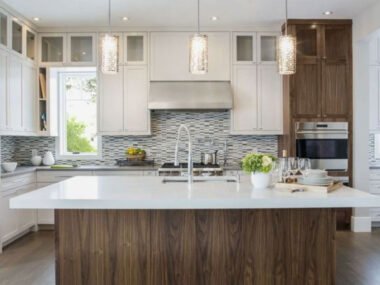Creating a truly relaxing indoor environment isn’t just about luxury or decoration—it’s about promoting a sense of peace, mental clarity, and emotional wellness throughout the year. In a world that’s constantly demanding attention, a tranquil home becomes a vital sanctuary where one can recharge, reconnect, and breathe freely.
Whether it’s the chilling winds of winter or the scorching heat of summer, the need for a consistent, calming atmosphere indoors never fades. Fortunately, achieving such harmony doesn’t require a complete renovation.
With the right strategies, attention to detail, and an understanding of how different seasons affect mood and comfort, anyone can transform their home into a space that offers year-round relaxation.
Keeping Your Chimney Safe and Efficient
A fireplace is often considered the heart of a cozy home, especially in colder months. It offers warmth, ambiance, and a focal point for relaxation. However, for it to be both enjoyable and safe, maintenance is key.
One essential aspect that homeowners should never overlook is proper upkeep of the chimney. Regular inspections and preventive measures help ensure safe operation and maintain the overall condition of the structure.
A clean chimney not only improves air quality but also enhances the overall indoor experience by eliminating unwanted odors and ensuring proper smoke ventilation. That’s why chimney cleaning and sweeping should be part of your seasonal routine—it keeps your hearth in excellent condition and supports a safe, relaxing indoor environment throughout the colder months.
Optimize Natural Light and Window Treatments
Natural light plays a powerful role in elevating mood and creating a sense of openness in any room. To maximize this effect, keep windows clean and unobstructed. Choose light-colored or sheer curtains that allow daylight to flow in freely while still offering privacy.
During winter, open the curtains during the day to invite warmth inside, and during summer, use blinds or layered treatments to control harsh sunlight and reduce glare. The ability to adjust lighting naturally according to the time of year ensures that your home feels inviting without becoming overly bright or gloomy.
Embrace Calming Color Palettes
Color significantly influences how a space feels. To create a calming atmosphere that works across all seasons, opt for neutral and earth-toned palettes—such as soft greys, warm beiges, pale blues, and muted greens. These shades help maintain a soothing ambiance without clashing with seasonal décor changes. Unlike bold or trendy colors that might feel overwhelming over time, a calming color base offers consistency and tranquility, forming a stable foundation for other elements to enhance the room’s serenity.
Incorporate Indoor Plants for Year-Round Freshness
Adding indoor plants is one of the simplest ways to bring life and relaxation into your living space. Plants not only purify the air but also offer visual relief with their natural colors and textures. Species like snake plants, peace lilies, and pothos thrive indoors and require minimal maintenance. They blend beautifully into any seasonal décor while enhancing the room’s oxygen levels and contributing to a healthier, more relaxing atmosphere.
Create Multi-Sensory Comfort Zones
A truly relaxing home engages all five senses. Beyond visual aesthetics, consider the sensory experience of your space. Soft throw blankets, textured cushions, and plush rugs provide tactile comfort. Ambient lighting—such as warm-toned lamps or candles—adds visual coziness. Soft background music or nature sounds can foster calm through audio stimulation. For scent, use essential oil diffusers or scented candles with subtle fragrances like lavender, sandalwood, or eucalyptus.
Maintain a Clutter-Free and Organized Space
Clutter directly impacts stress levels. A disorganized space can trigger feelings of anxiety and unease. To maintain a consistently relaxing home, regular decluttering is essential. Choose multifunctional storage solutions that keep necessities out of sight but within reach. Invest in quality over quantity—prioritizing meaningful and functional items instead of filling space with décor that lacks purpose.
Adjust Décor with the Seasons—Subtly
While it’s tempting to overhaul your entire space with every seasonal change, subtle adjustments are more sustainable and equally effective. In colder months, incorporate cozy textures like wool and fleece through throws and pillows. Add layers in warm tones such as rust, deep blue, or burgundy. In warmer months, swap these out for lightweight materials in soft pastels or coastal neutrals. Seasonal candles, floral arrangements, or a change in artwork can refresh the space without overwhelming it.
Improve Indoor Air Quality Consistently
Air quality is a critical yet often overlooked factor in maintaining a relaxing indoor space. Poor air can cause fatigue, headaches, or allergies—quickly diminishing comfort. Use air purifiers with HEPA filters, especially during pollen-heavy or dusty seasons. Modern Purair offers air purification solutions that can help maintain a healthier indoor environment. Ensure ventilation is sufficient, and check HVAC systems regularly to maintain optimal airflow. Natural air purifiers like activated charcoal or houseplants can also play a part. When the air you breathe is clean and fresh, your indoor environment becomes physically and mentally restorative.
Create Personal Corners of Escape
Not every area of your home needs to be communal. Designate small spaces—whether it’s a reading nook by the window, a meditation corner, or even a chair by your favorite indoor plant—as personal retreats. These corners should be free from distractions and personalized with items that bring you peace: a soft chair, your favorite books, or ambient lighting. Having a go-to space that’s just for you, even in a shared home, encourages daily decompression and fosters long-term mental wellness.
Promote Consistent Sensory Routines
Rituals have a grounding effect on the mind. Develop daily or seasonal routines that revolve around comfort and calm. These could be as simple as brewing a favorite tea before bed, lighting a candle at dusk, or opening windows each morning to let fresh air in. When these acts become consistent parts of your lifestyle, they enhance the sense of stability and predictability within your environment—both of which are fundamental to relaxation.
Balance Technology Use with Unplugged Time
Modern homes are filled with screens and devices that, while useful, can easily disrupt a calm setting. To maintain a peaceful ambiance, designate tech-free zones or hours, especially in bedrooms or quiet corners. Use analog alternatives like books, physical journals, or art supplies to wind down. Soft background lighting and reduced screen exposure, particularly in the evening, help the mind transition into a restful state.
All in all, a relaxing home doesn’t happen by accident—it’s the result of intentional choices that prioritize wellness, comfort, and harmony with the seasons. From maintaining essential features like your fireplace to fine-tuning sensory details, each element plays a role in creating a peaceful atmosphere.










